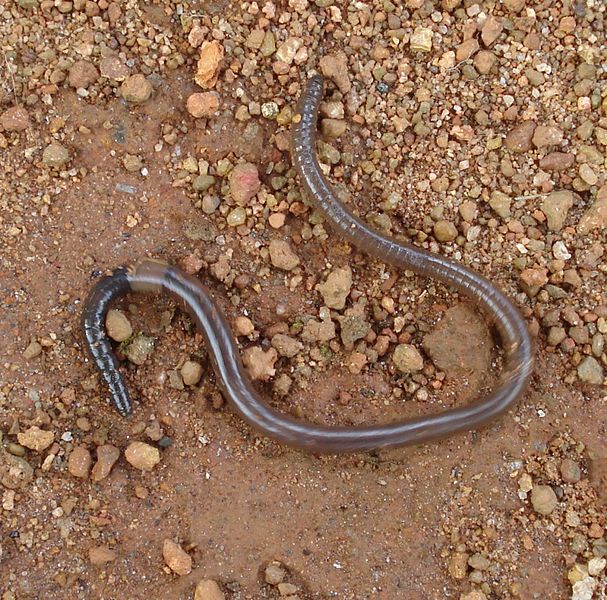
Earthworms – the earth’s tiny ecosystem engineers
Just like human engineers, earthworms change their environments. They burrow through the soil, breaking up the structure and moving materials around. These burrows create pores through which oxygen and water can enter and carbon dioxide can leave the soil.
There are three types of earthworms which make different kinds of burrows and have different benefits in the soil.
- litter dwellers – live close to the surface and in compost and convert plant remnants. They rapidly consume material and reproduce very quickly. They are usually bright red or reddish-brown. Compost worms, known as brandling or tiger worms, are often stripy.
- subsoil and topsoil dwellers – eat their way through the soil and contribute to a good soil structure. These earthworms are pale coloured – pink, grey, green or blue – and tend to make horizontalburrows through the soil to move around and to feed.
- vertical burrowers – dig permanent vertical tunnels in the topsoil and contribute to good water infiltration and oxygen provision. These are the most common earthworms in the UK. They are the largest species, often reddish brown, and they make permanent verticalburrows in soil. They feed on leaves on the soil surface that they drag into their burrows. They also cast on the surface around the entrance to their burrows
Earthworms play an important role in breaking down dead organic matter, like leaves and dead roots- a process known as decomposition. Decomposition releases the nutrients that are locked up in dead plants and animals and makes them available for use by living plants. Earthworms do this by eating organic matter and breaking it down into smaller pieces. Bacteria and fungi then feed on the smaller pieces and release the nutrients back into the soil.
By burrowing throughout the soil, earthworms mix the different layers and move organic matter around. Charles Darwin referred to earthworms as ‘nature’s ploughs’ because of this mixing of soil and organic matter.
This mixing improves the fertility of the soil by allowing the organic matter to be dispersed rather than just settling in the top layer where most of the dead material accumulates. Having lots of earthworms in the soil can increase crop yield by an average of 25% due to this increased soil fertility.
Earthworm casts (their poo) are also very important in soils and are responsible for some of the fine crumb structure of soils. These casts can contain 5 times more nitrogen, 7 times more phosphorus and 1000 times more beneficial bacteria than the original soil.
When earthworms are present in the soil there are more bacteria and fungi and those microorganisms are more active. This is important as bacteria and fungi are key in releasing nutrients from organic matter and making them available to plants.
These microorganisms are also an important source of food for many animals that live in soils.
- There are approximately 2,700 different kinds of earthworms, Britain has around 16 species.
- In one acre of land, there can be more than a million earthworms.
- Worms have no ears – they hear by sensing vibrations
- Worms have no eyes – they can sense light, especially at their front end. They move away from light and will become paralyzed if exposed to light for too long.
- Worms don’t have lungs. They breathe (absorb oxygen) through their skin. So, if a worm’s skin dries out, it will die.
- Worms live where there is food, moisture, oxygen and a favourable temperature. If they don’t have these things, they go somewhere else.
- Worms tunnel deeply in the soil and bring subsoil closer to the surface mixing it with the topsoil.
- Slime, a secretion of earthworms, contains nitrogen. Nitrogen is an important nutrient for plants. The sticky slime also helps to hold clusters of soil particles together.
- Earthworms can replace or replicate lost segments. This ability varies greatly depending on the species of worm you have, the amount of damage to the worm and where it is cut. It may be easy for a worm to replace a lost tail but may be very difficult or impossible to replace a lost head.
- Each worm has both male and female organs. Worms mate by joining their clitella (swollen area near the head of a mature worm) and exchanging sperm. Then each worm forms an egg capsule in its clitellum.
- Baby worms hatch from cocoons smaller than a grain of rice.
- Charles Darwin spent 39 years studying earthworms
- The largest earthworm ever found was in South Africa and measured 22 feet from its nose to the tip of its tail.
- Worms can eat their weight each day.
Download the information sheet HERE
